Section Quicklinks
As entities serving the public good, nonprofits have an ethical obligation to conduct their activities in a manner that is accountable and transparent to their constituents. Nonprofits engage in ongoing efforts to openly convey information to the public about their missions, activities, and decision-making processes. This information is easily accessible to the public and creates external visibility, public understanding, and trust in the organization.
KEY
- Legal Practices are legally required of all Montana nonprofits
- Essential Practices are widely recognized as industry standards and generally expected of all nonprofits
- Recommended Practices should be considered by all nonprofits, with implementation dependent on capacity and life stage
Practices
ACCOUNTABILITY, TRANSPARENCY, AND DISCLOSURE
- ★★★ A nonprofit must comply with all legal and other required reporting procedures. MT, US
- ★ A nonprofit has a responsibility to establish, achieve, and regularly measure clearly defined levels of performance in their activities and to share those results with the public.
- ★★★ A nonprofit must meet all federal requirements for public disclosure. The Internal Revenue Service requires that a nonprofit make annual returns (Form 990 as appropriate based on the gross receipts of the nonprofit) and tax exemption documents available to the public unless the nonprofit is subject to a harassment campaign. Nonprofits not classified as a private foundation are not required to publicly disclose a list of their donors. US
- ★ Information regarding fees and services are readily available to the public.
- ★ In serving the public trust, a nonprofit produces and distributes an annual report and/or posts information to the organization’s website, including names of board members, management staff, supporters, donors per the organization’s donor recognition policy, and documents regarding activities and program and financial performance.
- ★★★ Directors and officers must recuse themselves when they have a conflict of interest regarding a transaction over which they have authority on behalf of the nonprofit. Also in "Accountability and Transparency" MT, US
- ★★ To assist directors and officers in recusing themselves when they have a conflict of interest, the board of directors adopts a written conflict of interest policy regarding board members, staff, volunteers, consultants, and other contractors and adheres to this policy in all dealings. The conflict of interest policy clearly outlines potential conflicts and procedures for disclosure and dealing with conflicts; it provides for review by members of the board not involved in the conflict. Each director reviews, updates, and signs his/her conflict of interest statement annually. Potential conflicts are monitored and the conflict of interest policy is enforced in the event of a conflict.
- ★★★ A nonprofit ensures the provision of nondiscriminatory and, as required, confidential service to its constituents, staff, board members, and all other stakeholders. The nondiscriminatory and confidential service policies and procedures must be prominently displayed along with procedures to respond to violations as relevant to the organization. Also in “Employee and Volunteer” MT, US
- ★★ Employees and board members review and sign off on the organization’s written policy(ies) on this subject.
- ★ A nonprofit provides multiple means (telephone, fax, e-mail, and web form, for example) for contacting the organization to request information or provide input.
- ★★ Boards of directors provide information to the public that describes their decisions and decision-making processes. They may make meeting agendas and descriptions of significant decisions available to those who request them.
- ★ A nonprofit is encouraged to engage a diverse cross-section of stakeholders in the development of goals and service delivery methods to carry out its mission and commits to sharing accomplishments and lessons learned through this engagement.
- ★★ A nonprofit takes reasonable steps to make its public information, and, if applicable, its physical facility, accessible to its constituents, staff, board members, other stakeholders, and the community.
EQUITY PRACTICES
COMMUNITY ACCESS AND INPUT

